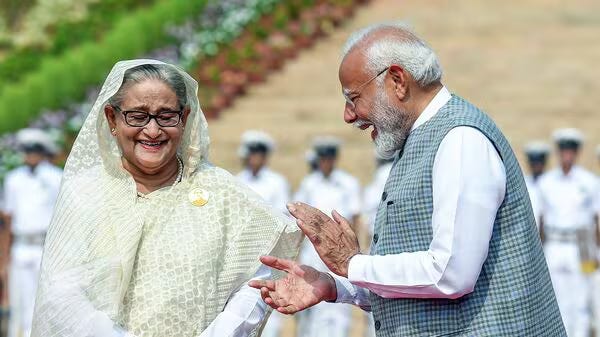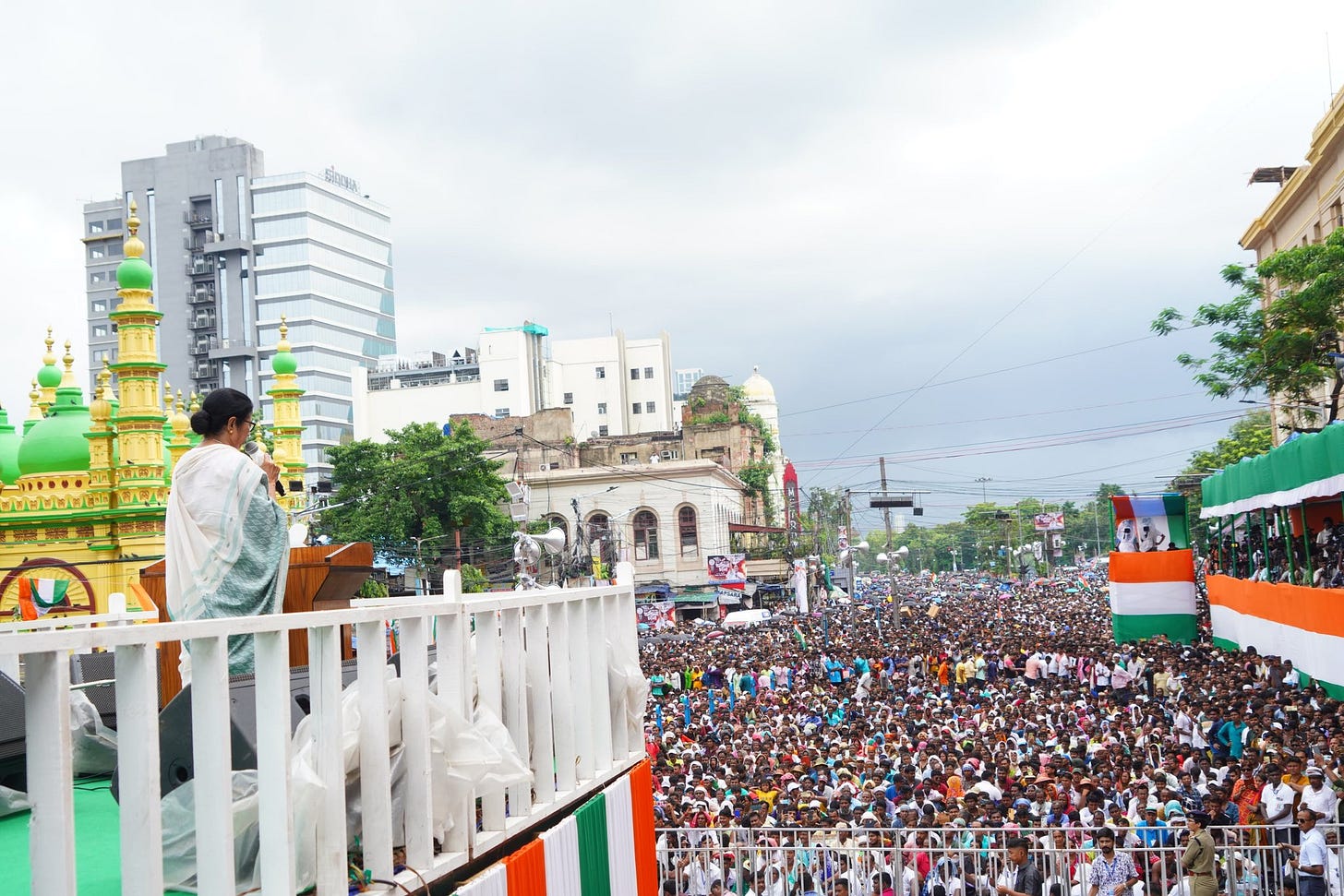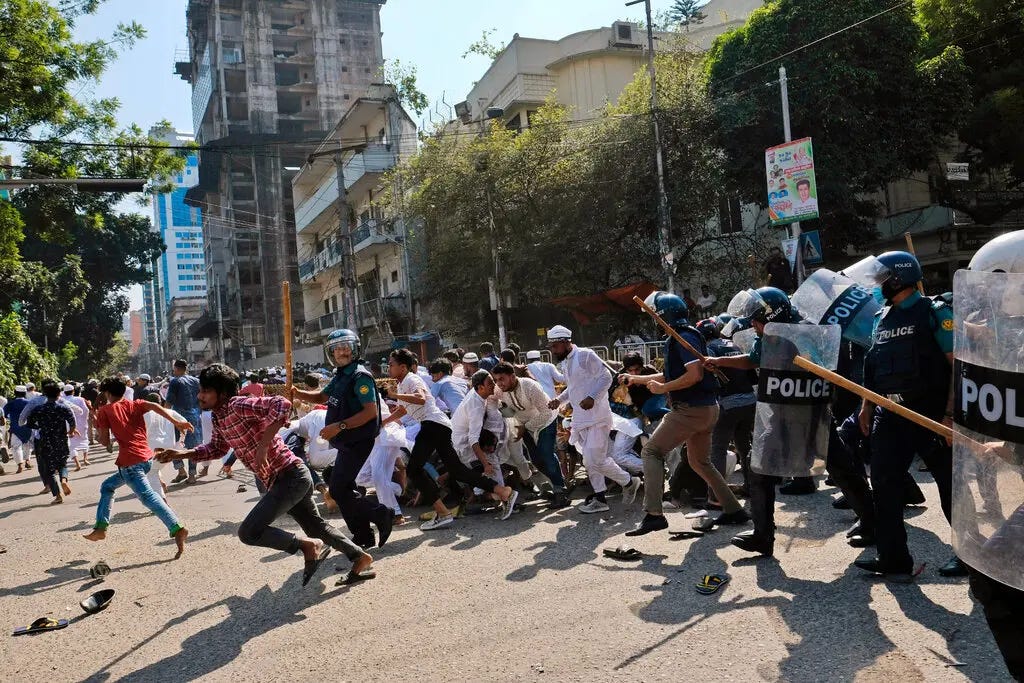Bangladesh Student Violence: Not Just a Refugee or Border-management Issue for India
West Bengal Chief Minister Mamata Banerjee has declared that the TMC-led State Government would offer refuge to people fleeing the violence in Bangladesh "if they come knocking on our doors".
Bangladesh Violence
The recent protests in Bangladesh have escalated into severe violence, resulting in a significant number of casualties. At least 133 people have been reported dead, with hundreds more injured, as the unrest spread across the nation. The violence began at Dhaka University and quickly engulfed other campuses and cities. Students, initially engaging in peaceful demonstrations, found themselves in violent clashes with police, paramilitary forces, and the army. Authorities resorted to firing tear gas, rubber bullets, and even live ammunition to disperse the crowds, leading to a high number of fatalities and injuries. With TV channels going off the air and the internet being blocked in most parts of the country, rumours about the death toll spread wildly. The government's imposition of a strict curfew and the deployment of the military to major cities further intensified the situation, raising concerns about human rights violations and the excessive use of force.
Historical Context
Bangladesh's journey from its tumultuous birth in 1971 to its current status as a developing nation is remarkable. The country emerged from the atrocities committed by the regime of Yahya Khan, which led to India's intervention and the Indo-Pak war in December 1971. This pivotal conflict resulted in Bangladesh's liberation, led by the legendary Awami League leader Sheikh Mujibur Rahman, who is widely regarded as the father of Bangladesh, and set the stage for its future development. Over the decades, Bangladesh has focused on rebuilding and advancing its economy, particularly through investments in education, healthcare, self-help groups, and industries like textiles and garments. These efforts have transformed Bangladesh into a country known for its international-quality products at affordable prices.
Political and Social Challenges
Despite significant progress, Bangladesh continues to grapple with political and social challenges. The recent violence has reignited debates over illegal immigration, particularly affecting neighbouring Indian states such as West Bengal, Assam, and Tripura. The porous border and India's far from perfect system for checking citizenship have exacerbated concerns about the influx of Bangladeshi immigrants into metropolitan cities. This has fueled political rhetoric and tensions, as local populations worry about the socio-economic impacts of such migration. The unrest in Bangladesh underscores the need for both countries to address these underlying issues to prevent further instability in the region.
Reasons for the Protests
The protests in Bangladesh began in early July 2024 over the government's job quota system. Key factors driving the unrest include:
A quota system that reserves 30% of government jobs for descendants of veterans from the 1971 independence war. Students argue this is discriminatory and benefits the ruling party's supporters.
High youth unemployment and intense competition for limited government jobs, which offer stability and good pay compared to the private sector. Over 30 million out of 170 million Bangladeshis are jobless or not in the system of education.
Frustration over inequality of opportunity, corruption, and the rising cost of living in Bangladesh, especially among educated urban youth.
The government had suspended the quota system in 2018 after similar protests, but reinstated it in June 2024 following legal challenges. This reignited the demonstrations.

Extent of the Protests and Violence
The initially peaceful protests quickly escalated into deadly clashes between students, police, and pro-government groups:
At least 133 people have been killed and hundreds more injured in the violence across Bangladesh since early July. Actual numbers may be higher.
Violent incidents began at Dhaka University on July 15 and rapidly spread to other campuses and cities nationwide. Students engaged in disruptive protests like rail and road blockades.
Police used tear gas, rubber bullets, and sound grenades against stone-throwing protesters who also set vehicles on fire. Pro-government student groups attacked demonstrators.
A strict curfew with "shoot on sight" orders was imposed as the military deployed to major cities. The government also shut down mobile and internet services to control the unrest.
Government websites like the prime minister's office and central bank were hacked, apparently by a group called "THE RSIST3", amid the communications blackout.
Implications for the Hasina Government
The protests present the biggest challenge to Prime Minister Sheikh Hasina, daughter of the martyred leader Sheikh Mujibur Rahman, since her disputed re-election in 2024. Notable developments include:
Hasina urged patience and announced a judicial probe into the deaths, but also cracked down hard on the protesters, drawing international criticism.
The government has alleged the opposition BNP party and Islamist groups have hijacked the protests to cause chaos. Police raided their offices and arrested leaders.
With communications cut off, it's unclear if the government's moves and a Supreme Court ruling to reduce the job quotas on July 21 have appeased protesters.
Even if the government quells this uprising, experts warn the underlying issues of unemployment, corruption and inequality will continue to fuel resentment, especially among youth.
Refugee Situation and India's Response
The violence has raised concerns about a potential influx of Bangladeshi refugees into India, which is already grappling with Rohingya refugees from Myanmar:
An estimated 10 million Bengali refugees had fled to neighboring India during the war in 1971, while 30 million were internally displaced within Bangladesh (then East Pakistan).
India currently hosts around 40,000 Rohingya refugees who face discrimination and the threat of deportation under the Hindu nationalist BJP government's policies.
Bangladesh has said it will not accept any more Rohingya refugees, hundreds of thousands of whom fled there from Myanmar. Some have sought to move on to India.
West Bengal Chief Minister Mamata Banerjee, whose state borders Bangladesh, had not commented specifically on the current unrest and any refugees, before her comments today (Sunday, 21st July— see below).
In the past, Banerjee has opposed the BJP's moves to exclude Muslim immigrants and refugees from citizenship, while allowing Hindus, Christians and other faiths.

Mamata Banerjee's Response
West Bengal Chief Minister Mamata Banerjee on today (Sunday) declared that the Trinamool Congress-led state government would offer refuge to people fleeing the violence in Bangladesh "if they come knocking on our doors." Addressing a massive 'Martyrs' Day' rally amid heavy rain in Kolkata, Banerjee emphasised the humanitarian duty of providing shelter to those in need, referencing a United Nations resolution on the treatment of refugees.
"I cannot speak anything about Bangladesh as it is another country. The Indian government will speak about that. But if helpless people (from Bangladesh) knock on Bengal's door, we will give them shelter. There is a resolution of the UN. Neighbours will respect refugees," she stated. Banerjee reassured Bengal residents that the state government would fully support those with relatives caught in the turmoil across the border, highlighting her commitment to humanitarian principles.
Mamata Banerjee's stance is not inconsistent with her previous opposition to the BJP's policies, which seek to exclude Muslim immigrants and refugees from citizenship while favouring Hindus, Christians, and other faiths. Her remarks underscore a broader commitment to inclusivity and support for the oppressed, distinguishing her approach from the central government's policies on immigration and refugee issues.
Broader Implications for India
Beyond the refugee issue, the Bangladesh protests also resonate in India given similar problems of:
Massive youth unemployment, with government jobs highly coveted for their security and benefits. Nearly 40% of Indians aged 15-29 are not in employment, education or training.
The job creation figures dished out by government institutions such as the RBI or the Niti Aayog, or even by “independent” economists, do not satisfy the youth without a meaningful job.
Controversies over affirmative action quotas in government jobs and education, which aim to remedy historical discrimination against lower castes and tribes but are seen by some as outdated and unfair.
The subterranean stresses have come to the surface following the NEET exam imbroglio and the NTA’s shoddy handling of the national entrance exams, not to mention the recent controversy surrounding fake disability certificates submitted by some UPSC candidates leading to their appointment to the IAS.
Rising discontent over economic inequality, corruption, and shrinking opportunities that have fueled protests in India in recent years, though not yet on the scale seen in Bangladesh.
In Summary
In summary, the Bangladesh protests reflect systemic challenges also faced by India and require addressing the roots of youth disenchantment and alienation and perceived unequal access to employment opportunities. While India obviously cannot interfere directly in the internal affairs of a friendly neighbouring country, it would be naive to either adopt a hands-off approach or ignore the similar warning signals that are emerging on the horizon in India. This issue should not be seen purely from the standpoint of a potential refugee influx, given the contentious allegations of Bangladeshi nationals infiltrating into India in large numbers.
Implications for India
When the Chief Minister of a border state like West Bengal speaks out of sync with the policy of the Government of India, it complicates an already volatile situation. As the Monsoon Budget session of Parliament is set to commence tomorrow (Monday, 22nd July), this contentious subject is bound to be raised on the floor of the House. It is, therefore, imperative for the Central Government to address this issue proactively, not merely from a border-management standpoint but also with consideration of the United Nations’ protocols on refugees from neighbouring countries seeking asylum.
At a deeper level, the Finance Minister's seventh successive Budget must focus on creating jobs rather than superficial tinkering with tax rates alone. Absent serious reforms, the risk remains of escalating unrest spilling across the border, as the underlying factors are not vastly different in India. Addressing these issues comprehensively is crucial to prevent similar crises and ensure regional stability.




